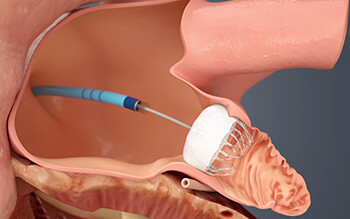Watchman provides new life for AFib patient

People living with AFib are five times more likely to experience a stroke. AFib is the most common heart rhythm disorder — affecting 5 million Americans, and about two to five percent of people living in the Mid-South.
Memphian Barbara Dowell was diagnosed with AFib in 2011 and had been on a prescribed blood thinner since she has diagnosed. She has had difficulty maintaining a therapeutic level with her blood thinner.
She comes to Sutherland Cardiology Clinic every week or two to have her blood checked and her medicine adjusted. Her blood ranges from being too thin, which can lead to bleeding, or too thick, which can cause a blood clot and can lead to a stroke.
In February, Dowell was the first patient in the Memphis area to receive Watchman, a permanent heart implant that reduces the risk of stroke.
“I decided to do whatever I could to improve my health,” said Dowell.
She said not having to take blood thinners has eased her mind of the complications that medicine can cause.
The minimally invasive procedure — performed at Methodist Le Bonheur Germantown Hospital — only takes an hour. Under general anesthesia, a catheter is inserted through a vein in the leg and is guided up to the heart where the device is opened like an umbrella in the left atrial appendage (LAA) of the heart, permanently cutting off blood to that area by forming a barrier against blood clots.
Patients, like Dowell, stay overnight and go home the next day. After 45 days, the vast majority of patients can stop taking a blood thinner.
“Watchman is a huge breakthrough,” said Dr. James Litzow, an electrophysiologist for Sutherland Cardiology Clinic, part of the Methodist family. “My patients are extremely pleased to learn there is an alternative to taking blood thinners for the rest of their lives.”
“Due to the millions of Americans who have AFib, this is a significant advancement for cardiac patients,” continued Dr. Litzow. “The Watchman gives me a device that I can insert through a simple minimally invasive procedure that allows me to help my patients reduce their risk of stroke without having to take blood thinners.”
